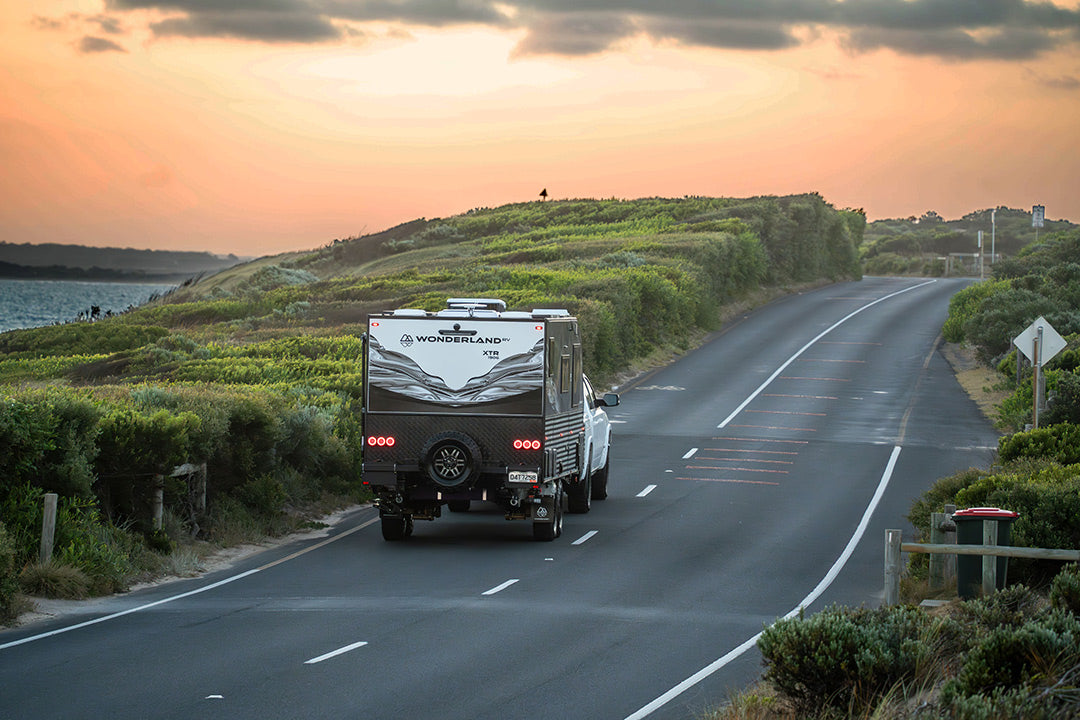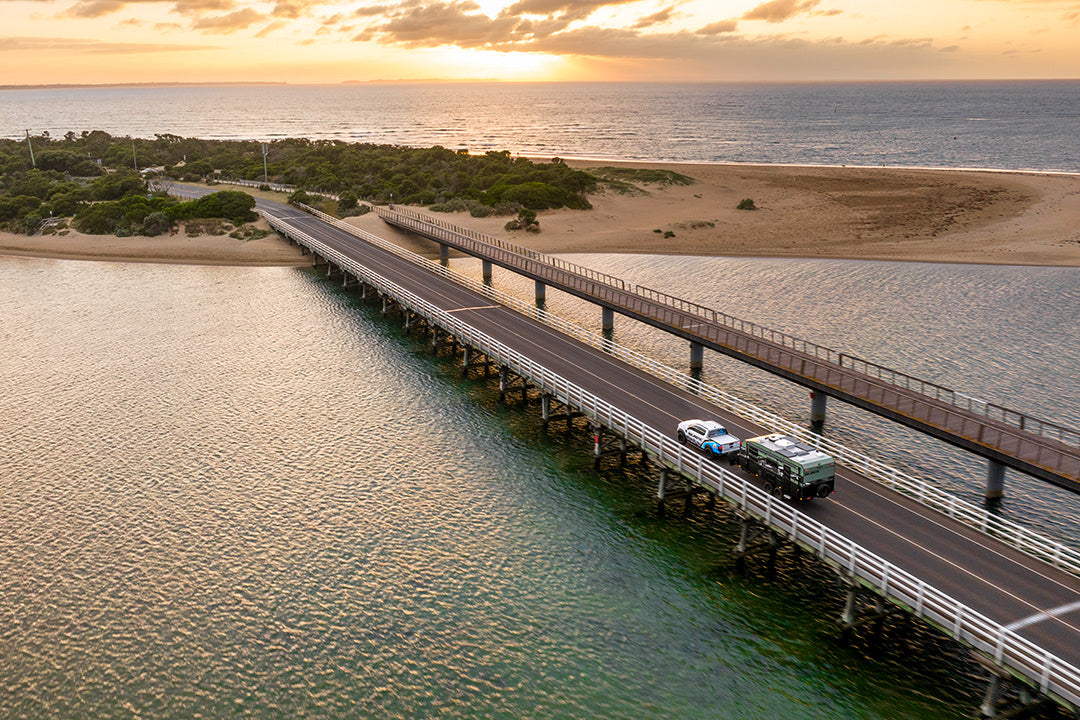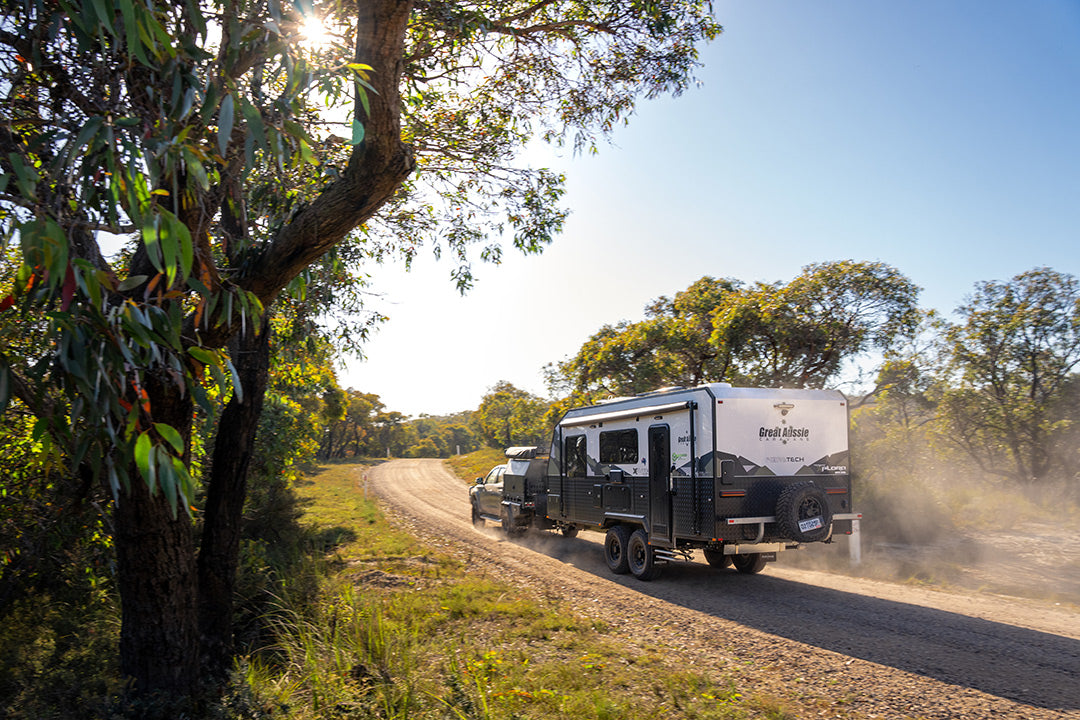A guide to RV fridges and understanding how they work

The fridge is the most relied-upon appliance in an RV setup. Keeping your food fresh and beverages cold are imperatives for a fun trip. So much so, having more than one fridge is not unusual these days, particularly if you take the tow vehicle into account as well. In this article we will explore how they work, the various types of fridges available, the pros and cons and how to get the most out of them. As there are some complex concepts here, we have used a little repetition to reinforce the ideas.
How do they work?
At the most fundamental level, all fridges work on the same principle. They have two heat exchangers. One of the heat exchangers (evaporator) absorbs heat out of the fridge compartment lowering its temperature. Fridges often have two evaporators, one for the freezer compartment and another for the main fridge compartment. The other heat exchanger (condenser) dissipates heat into the air outside the fridge compartment. The heat exchangers do their thing thanks to fluid (refrigerant) that repeatedly flows between them via a closed loop of pipes. The refrigerant is pushed around the loop of pipes by a heat/pressure source. The net result is the fridge gets cool on the inside and hot on the outside. It is therefore necessary to dissipate this external heat to prevent the fridge from having to operate in an increasingly hot environment. This is achieved with ventilation and sometimes fans.
There are two different methods for pushing the refrigerant around the system. One fridge type uses a high-pressure pump known as a compressor and they are unsurprisingly known as compressor fridges. The other fridge type uses heaters to boil the refrigerant raising its pressure. There are usually three different ways to power these boilers — LPG, 240V and 12V. Hence these fridges are known as three-way fridges.
Compressor fridge
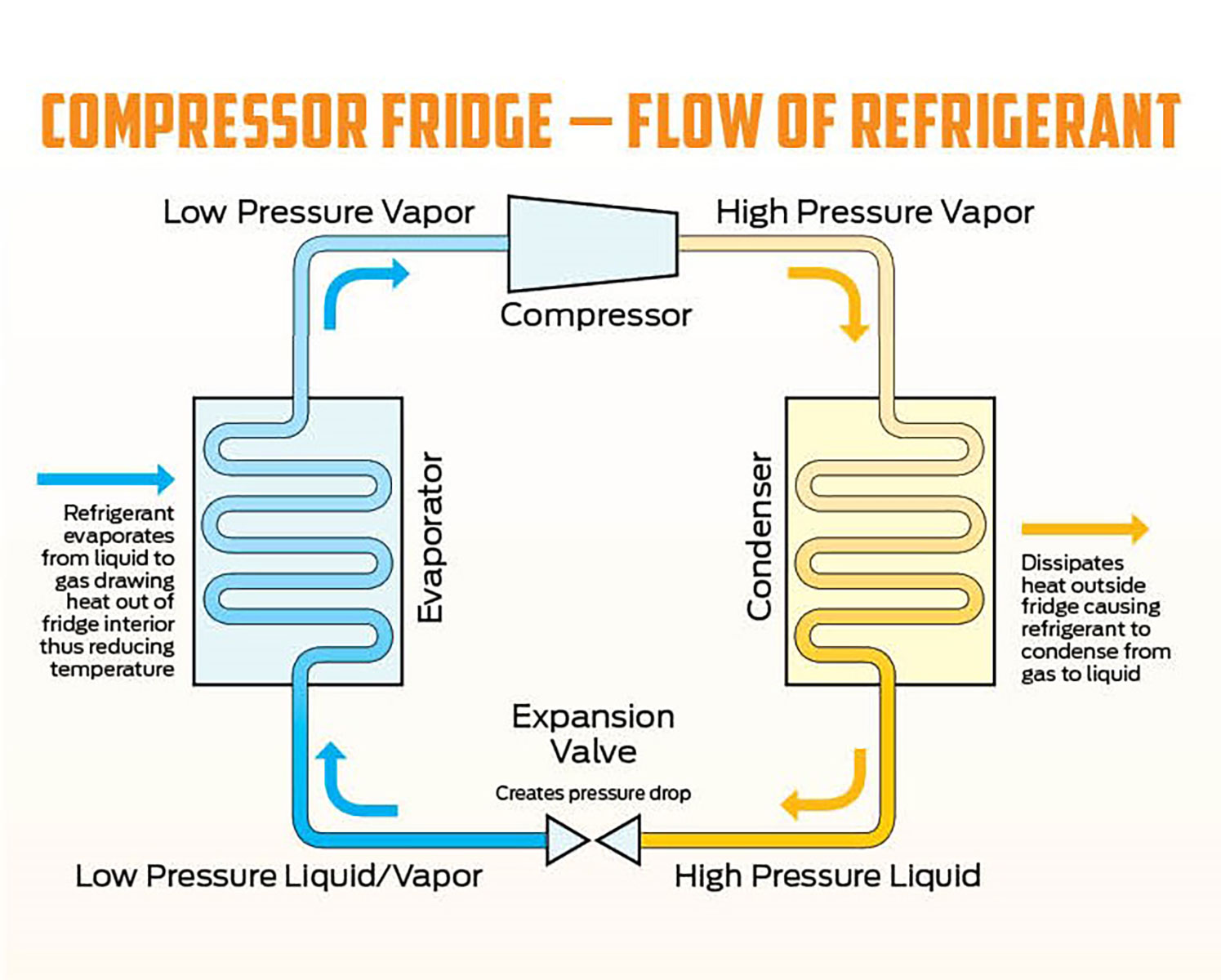
The compressor pumps hot gaseous refrigerant to the condenser. The condenser is made up of a series of pipes on the outside of the fridge compartment exposed to the atmosphere. This sheds heat and partially cools and condenses the refrigerant to a liquid — hence the name condenser. The liquid refrigerant continues through the pipes (still being pushed by the compressor) to be forced through a valve allowing the liquid to expand. As the liquid expands it spreads over a larger area creating a pressure drop and corresponding drop in temperature — you can experience this firsthand when you feel the cold from the contents of spray deodorant depressurising when it comes out of the nozzle. The depressurised refrigerant then flows into another series of coils inside the fridge compartment evaporating from a liquid to a gas — hence the name evaporator. Evaporation causes heat to be drawn away from the fridge interior thus lowering its temperature. The gaseous refrigerant is then drawn back to the compressor to repeat the cyclical process.
Three-way (absorption) fridge
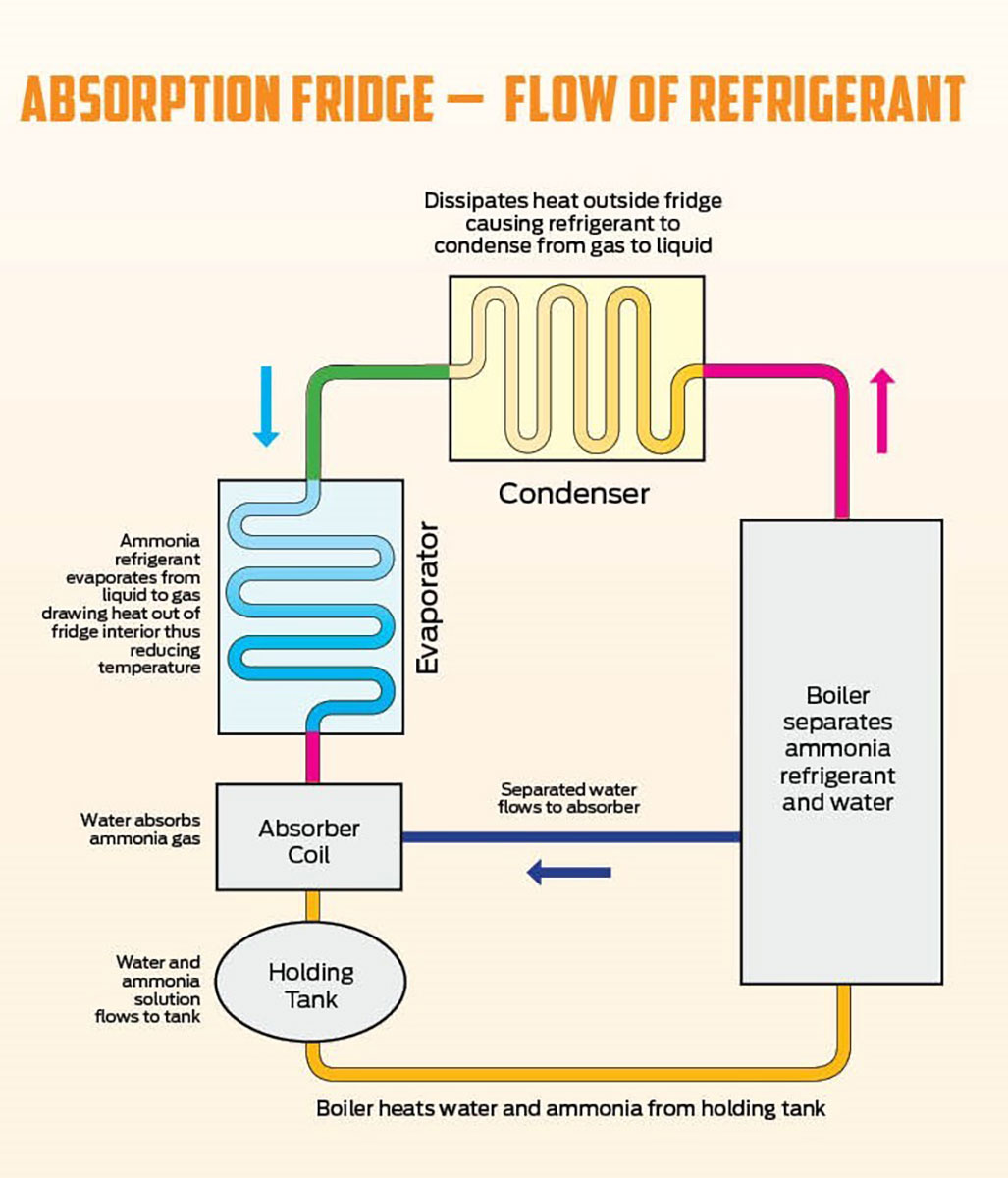
Three-way refrigerators use ammonia as the refrigerant. A three-way fridge relies on the fact that water readily absorbs ammonia — hence the alternate name absorption fridge. In the circulating process, ammonia is continuously separated from and reabsorbed by the water through a complex maze of pipes. A boiler is used to distil the ammonia dissolved in the water. Water vapour and separated ammonia gas travel along a pipe driven by the pressure of the boiler. The water vapour travels along the pipe and turns back into a liquid before the ammonia gas does. This causes the liquid water under gravity to run into a separate section of pipe known as the absorber coil. Meanwhile, the ammonia gas enters the condenser. In the condenser, the ammonia cools to a liquid through dissipating heat to the outside of the fridge compartment. Hydrogen is introduced to the ammonia from another pipe to aid evaporation. The liquid ammonia then flows through a constriction and into a larger opening at the evaporator. As the liquid ammonia expands it spreads over a larger area causing a pressure drop, evaporating into a gas. The evaporation draws heat away from the inside of the fridge. The ammonia and hydrogen continue along the system. Ammonia is heavier than hydrogen causing the ammonia to fall down a section of pipe rejoining the water. Here the water absorbs the ammonia, and it flows down to a holding tank where it feeds the boiler so the process can start all over again.
Pros and cons — compressor vs three-way (absorption)
Absorption fridges have been doing the job in high ambient temperatures for decades. However, compressor refrigerators are more effective at rapidly lowering and maintaining cool temperatures in high ambient temperatures. An absorption fridge can run off LPG for up to a couple of weeks. Historically, that gave them the edge on basic 12V systems powering compressor fridges, which may not run as long. However, the growing popularity of more sophisticated electrical systems with lots of solar power and big lithium battery banks means that a compressor fridge could theoretically run indefinitely in the right conditions. Absorption fridges require more ventilation to the exterior to aid cooling, increasing the possibility of dust ingress. On the other hand, compressor fridges need less exterior ventilation, and some do not require any exterior ventilation at all, making this aspect of the van dustproof. Absorption fridges are silent because they have no moving parts. Compressor operation does make some noise, but improved design has made them progressively quieter over the years. Absorption fridges require the van to be almost perfectly level for the gravity part of the recirculation process to work. Compressor fridges are more forgiving for operating on a slope.
Fridge configurations
At the most basic level, we have portable and fixed fridges. Portable fridges are generally shaped like a chest with a lid hinged at the top. They are designed to be strapped down in a vehicle so they can be easily removed. Due to their portable nature, they are exclusively compressor-style fridges. Most fixed fridges are more like your upright fridge residential refrigerator with a side-hinged door. They are generally mounted into cabinetry. Upright fridges can be either three-way or compressor style. Another form of fixed fridge is a drawer fridge where the cooler compartment slides in and out of its own cabinet. There is arguably a third application that sits in between fixed and portable that we can call relocatable — these are small upright fridges that can be strapped down and removed from a vehicle if required without too much effort.
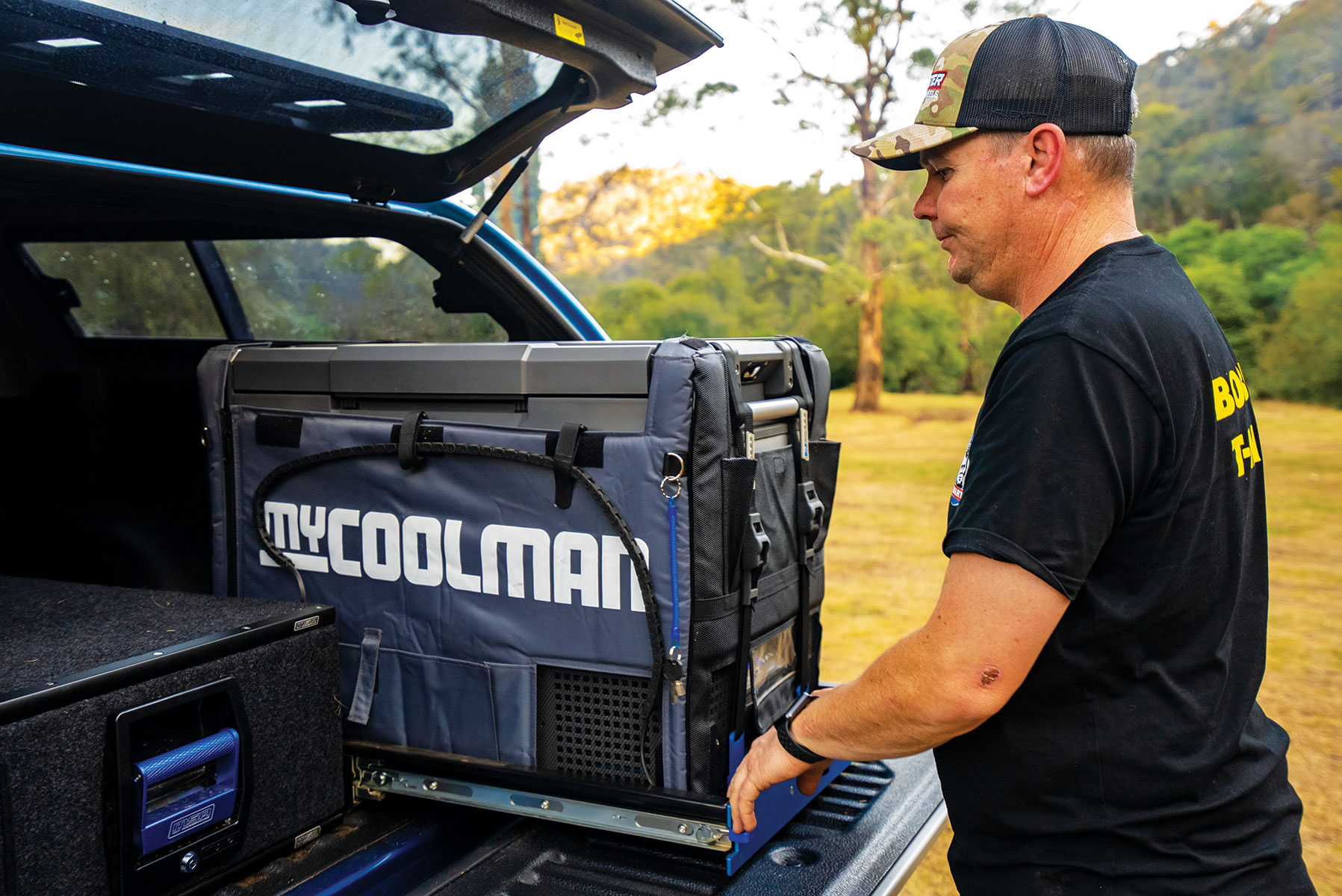
Fixed/upright fridges
Upright fridges are the domain of the internal kitchen in your caravan. They usually have much more storage capacity than portable fridges because you don’t have to worry about lugging them around. They are also much more user-friendly because you can see and access everything stacked on multiple shelves and on the side swinging door. You do need to be more careful packing an upright fridge to avoid goods bouncing off the shelf in transit or placing heavy items in the door that put a strain on the hinge. Portable fridges can be a pain in the proverbial when you need to dig into the bottom of a compartment to get to what you are looking for. Simply seeing what is in the fridge can be another pain if you are vertically challenged as you need to look in from the top of the fridge. Plus, with an internal vertical fridge, you don’t have to go outside to get to the fridge in bad weather like you would with a portable fridge.
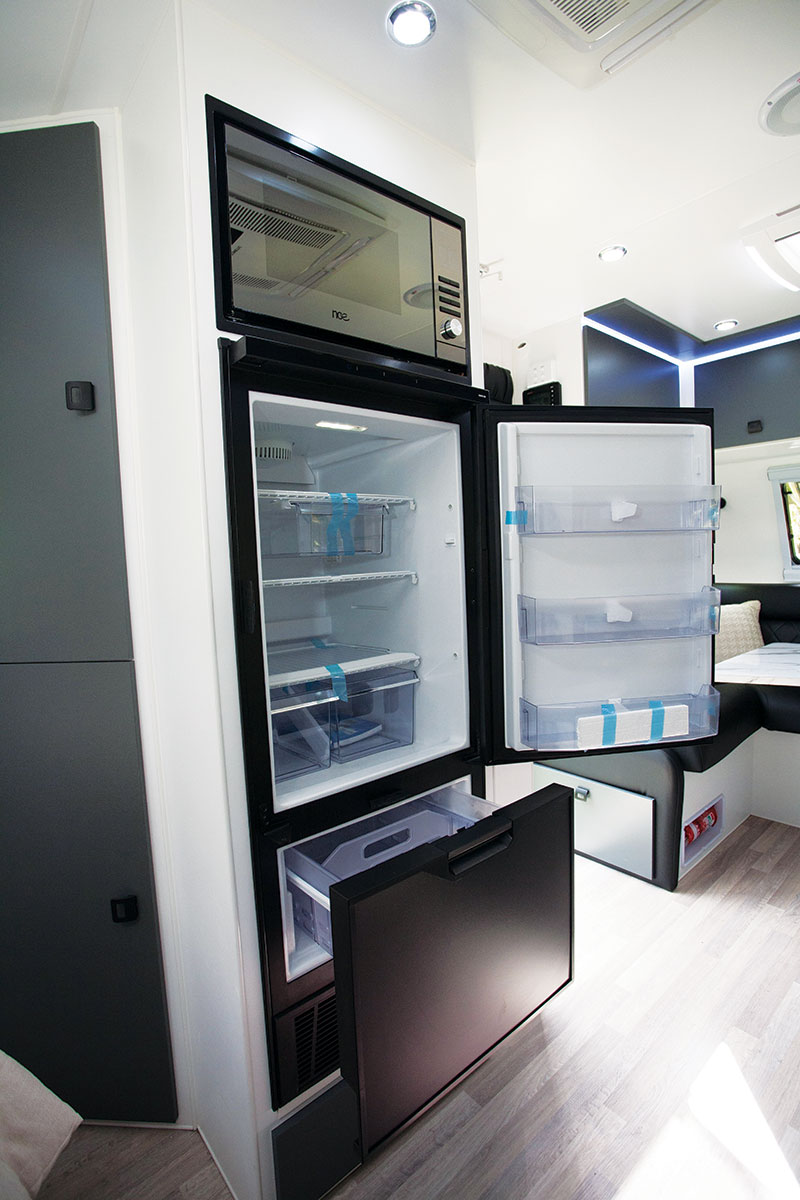
Upright fridges are less efficient as every time you open the door cold air ‘falls out,’ which is replaced with ambient air that needs to be cooled. Chest fridges tend to hold their cold air much better due to the door being on the top of the compartment. Despite some disadvantages, storage capacity, visibility and access make upright fridges the no-brainer choice inside a caravan.
Portable/chest fridges
Portable fridges are becoming more popular in RVs. We see them in hybrid vans and campers as the primary fridge accessed externally via a slider. We also see them in large offroad vans, again on external access sliders, complementing an upright fridge mounted inside the van. Finally, we see them being used as a second or even third fridge mounted inside the tow vehicle.
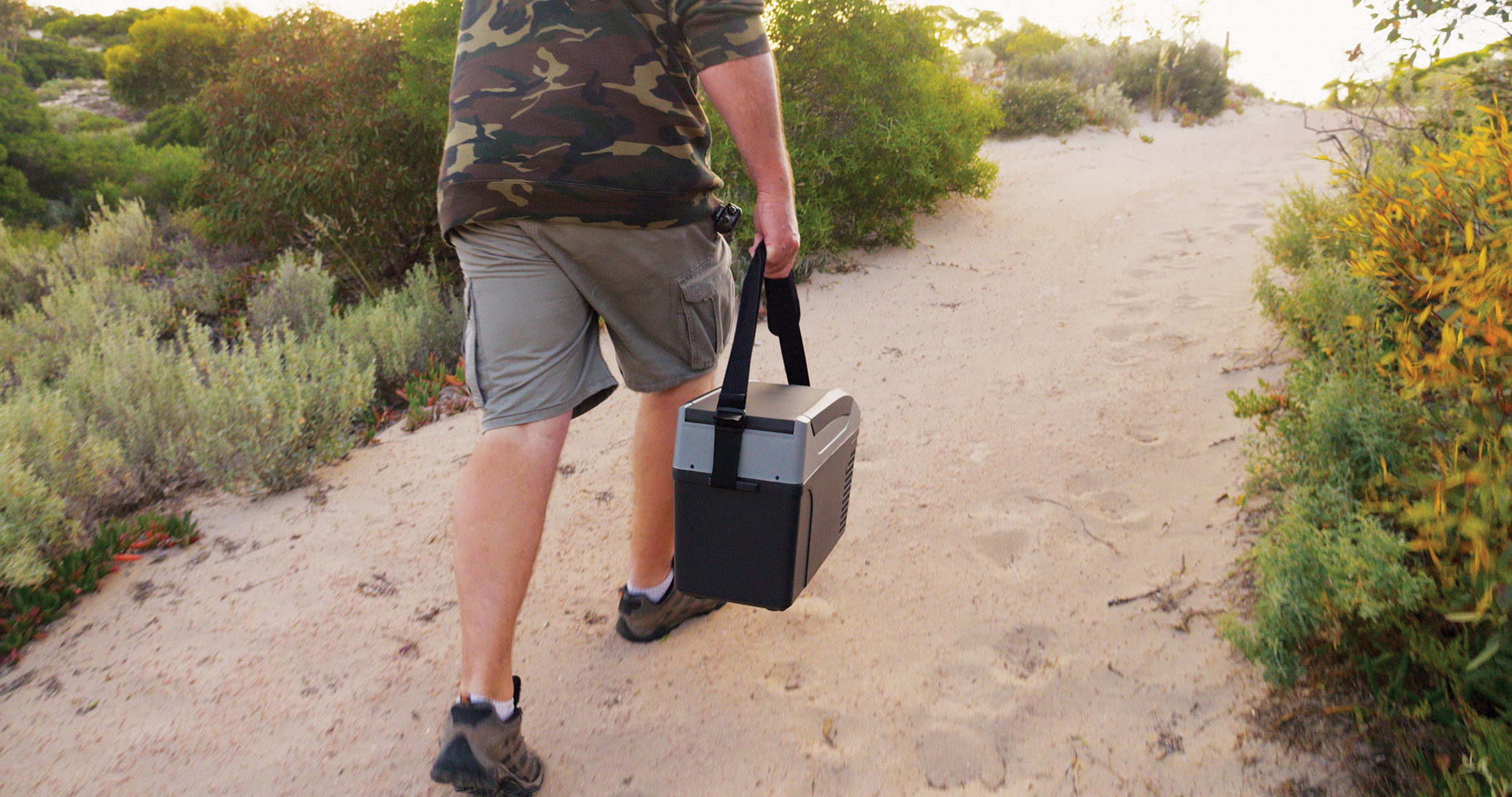
Daniel Bennett, Product Manager for myCOOLMAN (specialists in portable fridges), reckons they have a number of advantages. “The most obvious one is in the name, portable. You can take them with you wherever you go. You can move them from the van to the car if you leave the van behind for part of a trip. If your vehicle is in a sunny spot, you can simply move the fridge to run in a cooler, shady spot to save power. You can use it for a day at the beach or just use it as an additional fridge at home for parties. They are more efficient. Cold air doesn’t escape as easily when you open the door like an upright fridge. They can be installed to have much better ventilation than an upright fridge inside built into cabinetry with limited space and potentially higher ambient temperatures than outside.”
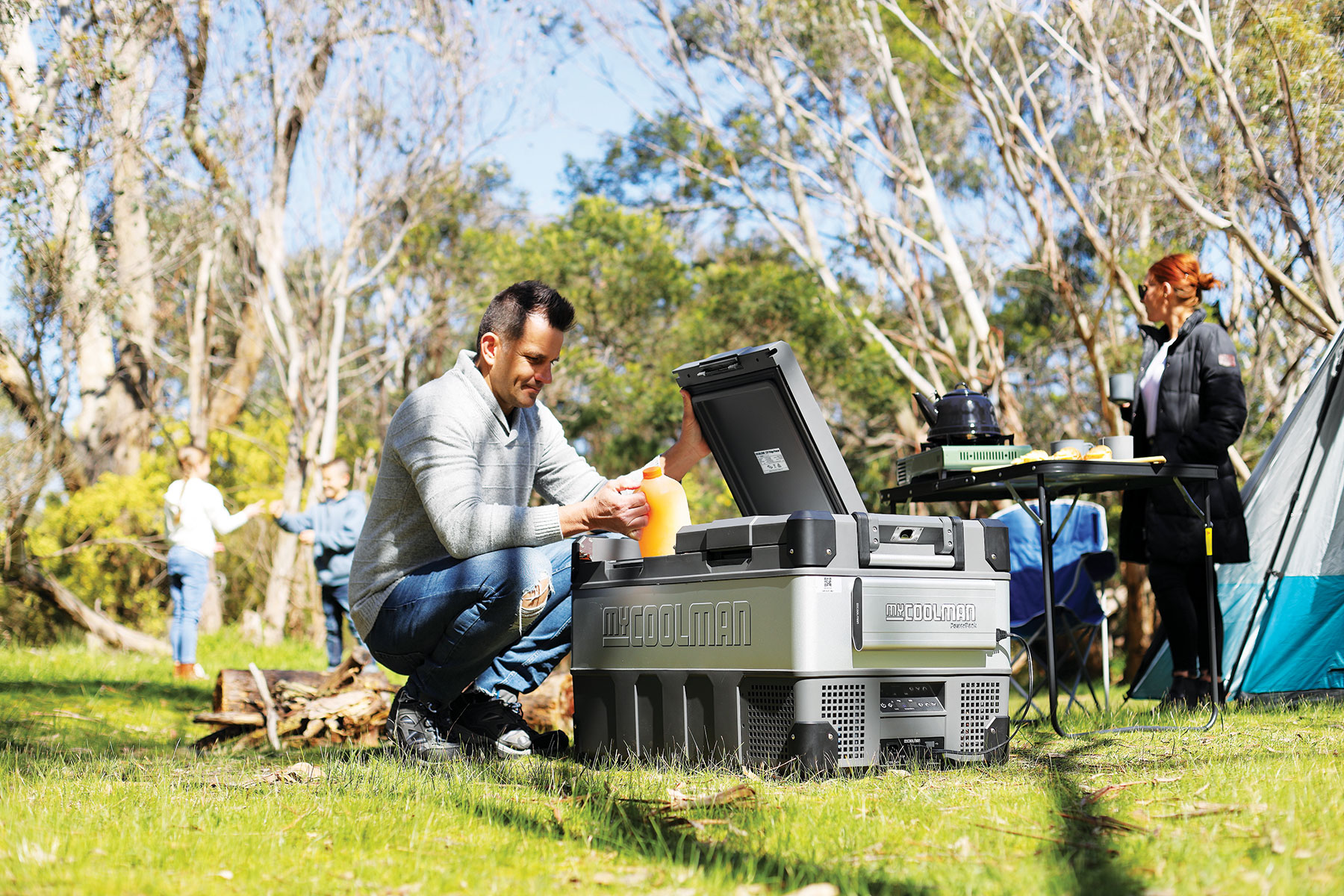
Daniel continued, “Talking about efficiency, myCOOLMAN have among the thickest insulation in the industry — most models are 60mm thick. When you are considering a portable fridge, ask about the thickness of the insulation and whether the compressor fitted is a known brand supplier. Other good features to consider include good-quality wide seals that prevent loss of cold air, flush carry handles to keep the unit streamlined, the ability to plug in power on both sides of the fridge, a readout that is easily visible in the sun, the ability to run the fridge with a power pack and Bluetooth connectivity via a phone app.”

Single zone vs dual zone
Chest fridges are available in two sub-types. Single zones have a single compartment that runs at the one temperature you set throughout the compartment. This could be at ‘freezer’ temperature or ‘fridge’ temperature. Dual-zone fridges have two separate compartments that can be such that the running temperatures can be set independently. Typically, this would mean you would run one compartment as a fridge and the other compartment as a freezer. But you could run both compartments as a freezer or both compartments as a fridge.
Of course, there are pros and cons with both types! The single zone provides maximum internal capacity for a given external size. Singles are slightly lighter, have fewer parts to fail and are a little bit cheaper. Dual zones are the opposite of the above. You trade off some internal capacity, weight and cost to gain the versatility of being able to have two different cabinet temperatures.
Some people choose to operate two single-zone fridges with one designated as a fridge and the other as a freezer. This can spread the weight around as a fully loaded 110L fridge is very heavy to lift. It also spreads the risk around on long, remote trips. If one fridge happens to play up, you still have another one at your disposal. Plus, if you are only doing a short trip, one smaller fridge may be all you need.
Get the most out of your fridge
A key point in this article is fridges draw heat from inside the fridge cabinet and dissipate it to the outside air through some form of venting. With portable fridges in particular, it is imperative that you do not block off airflow by placing items near the vents. It is an easy mistake to make when you are trying to cram in as much stuff as possible into a vehicle. You don’t want to block ventilation in a vertical fridge either, it’s just you are less likely to do it.

To optimise efficiency, minimise how often you open fridge doors to reduce loss of cold air. Your fridge will stay cooler if it stays reasonably full. The more mass you put in the fridge, the longer it will take to cool down but once it is cool it will also take longer to lose temperature. Think of a big block of ice taking longer to melt in the sun than a small block of ice. In a vertical fridge, the prevailing wisdom is to allow some space for cold air to circulate around the goods in the fridge. In a chest fridge this is not an option because they do not have shelves and the goods are piled on top of each other with no air space. To make it easier on your fridge it helps to put your goods in already cold rather than ambient temperature.
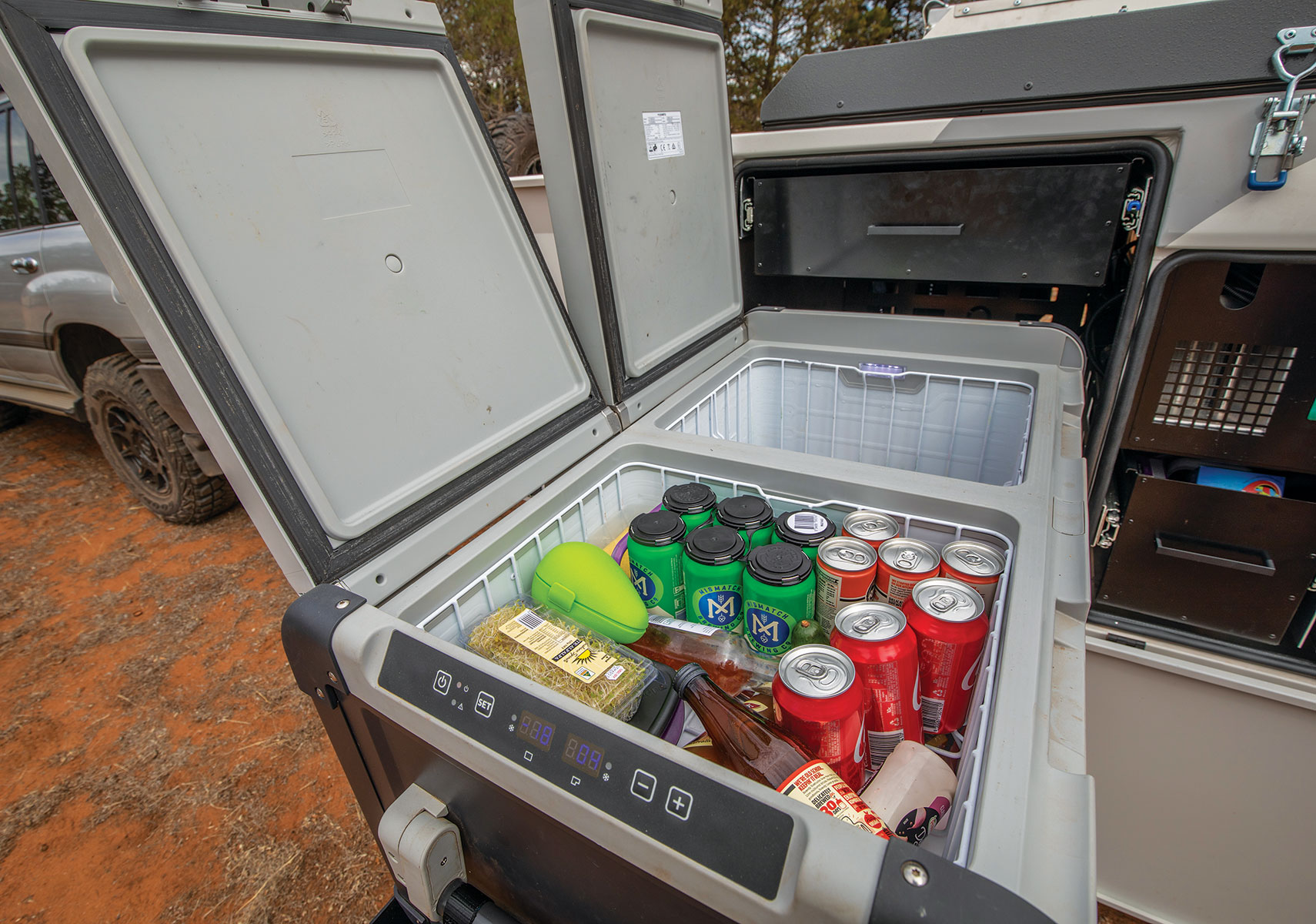
Experiment with the temperature you set the fridge. You do not necessarily need to put it on the coldest setting. Running slightly ‘warmer’ may still keep your goods fresh, prevent accidentally freezing goods in the non-freezer compartment and use less energy. Finally, for smaller fridges without crispers, figure out where the coldest part of the non-freezer compartment is located and avoid putting lettuce etc. there. This can prevent it from freezing.
The wrap
All fridges work by drawing heat out of the interior (thus reducing the temperature) and shedding the heat to the exterior. There are two ways to achieve this — absorption (aka three-way) and compressor fridges. Three-way fridges have served the caravan industry well for decades and are still seen in budget caravans. However, with the advent of superior electrical power systems, compressor fridges have taken over the majority of the market. Traditionally, when you think of a caravan, you picture an upright fridge which still rules supreme in conventional caravan interiors. Portable fridges come to the fore in campers and hybrids with limited internal space and are increasingly being used as a supplementary fridge in big offroad vans. There is no doubt we are spoiled for refrigerator choice in contemporary RV setups.
Thanks to the following companies who provided invaluable background information and images for this article:
THE NEXT STEP
Are you ready to experience the freedom of the open road? Don't wait - Find your dream getaway now!
Related Articles:
Operation 200 Part 4: Lights, power and ice cream




